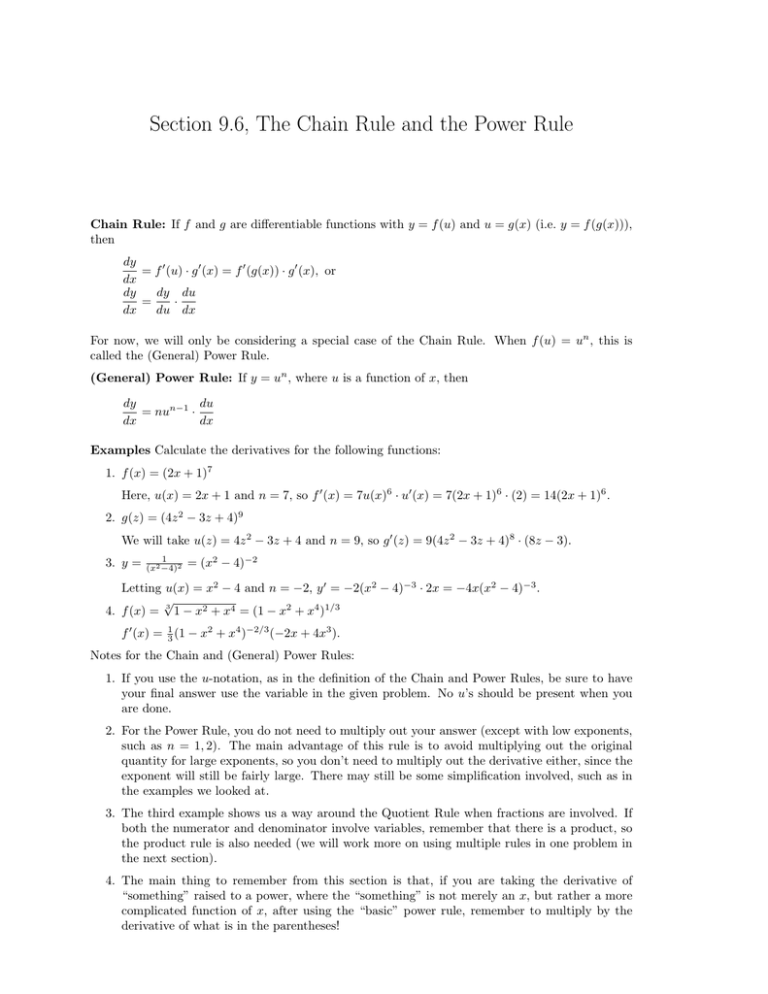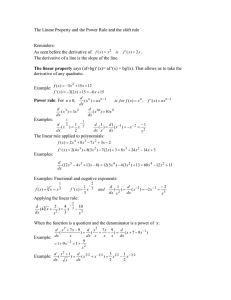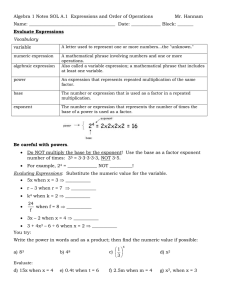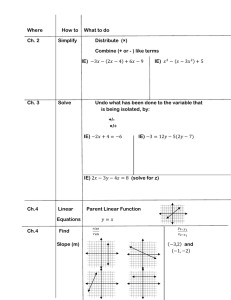Section 9.6, The Chain Rule and the Power Rule
advertisement

Section 9.6, The Chain Rule and the Power Rule Chain Rule: If f and g are differentiable functions with y = f (u) and u = g(x) (i.e. y = f (g(x))), then dy = f 0 (u) · g 0 (x) = f 0 (g(x)) · g 0 (x), or dx dy dy du = · dx du dx For now, we will only be considering a special case of the Chain Rule. When f (u) = un , this is called the (General) Power Rule. (General) Power Rule: If y = un , where u is a function of x, then du dy = nun−1 · dx dx Examples Calculate the derivatives for the following functions: 1. f (x) = (2x + 1)7 Here, u(x) = 2x + 1 and n = 7, so f 0 (x) = 7u(x)6 · u0 (x) = 7(2x + 1)6 · (2) = 14(2x + 1)6 . 2. g(z) = (4z 2 − 3z + 4)9 We will take u(z) = 4z 2 − 3z + 4 and n = 9, so g 0 (z) = 9(4z 2 − 3z + 4)8 · (8z − 3). 3. y = 1 (x2 −4)2 = (x2 − 4)−2 Letting u(x) = x2 − 4 and n = −2, y 0 = −2(x2 − 4)−3 · 2x = −4x(x2 − 4)−3 . √ 4. f (x) = 3 1 − x2 + x4 = (1 − x2 + x4 )1/3 f 0 (x) = 13 (1 − x2 + x4 )−2/3 (−2x + 4x3 ). Notes for the Chain and (General) Power Rules: 1. If you use the u-notation, as in the definition of the Chain and Power Rules, be sure to have your final answer use the variable in the given problem. No u’s should be present when you are done. 2. For the Power Rule, you do not need to multiply out your answer (except with low exponents, such as n = 1, 2). The main advantage of this rule is to avoid multiplying out the original quantity for large exponents, so you don’t need to multiply out the derivative either, since the exponent will still be fairly large. There may still be some simplification involved, such as in the examples we looked at. 3. The third example shows us a way around the Quotient Rule when fractions are involved. If both the numerator and denominator involve variables, remember that there is a product, so the product rule is also needed (we will work more on using multiple rules in one problem in the next section). 4. The main thing to remember from this section is that, if you are taking the derivative of “something” raised to a power, where the “something” is not merely an x, but rather a more complicated function of x, after using the “basic” power rule, remember to multiply by the derivative of what is in the parentheses!




